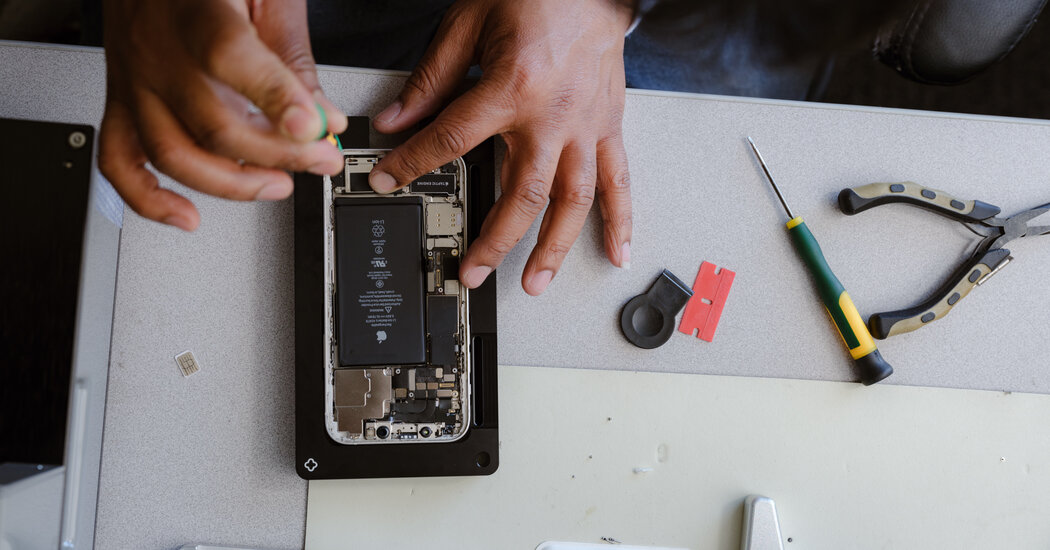
This fall, the company will begin allowing customers to replace broken parts with used iPhone components without its previous software limits.
Apple said Thursday that it would relax limits on repairing newer iPhones with used parts like screens, batteries and cameras, a reversal from its previous practice of using software to encourage people to work with new and more expensive Apple-approved parts.
The change comes weeks after Oregon passed a law outlawing Apple’s practice of tying parts to software, which is known as “parts pairing.” Similar bills are being considered in Colorado and more than a dozen other states. Apple had objected to the Oregon legislation before its passage, saying customers could be made vulnerable to security risks if Apple was required to allow lower-priced parts made by third-party suppliers.
In the past, if an iPhone owner broke a part — a screen, for instance — and installed a genuine, used Apple screen purchased from a source such as eBay, the replacement display would not work properly because its serial number did not match the one in Apple’s database. The only way to install a fully functioning replacement part was if it was bought from Apple, which had the tools to pair the part with the phone.
Apple’s new policy will remove those restrictions for the iPhone 15, which it released last year. Apple said the change would begin this fall and apply to genuine Apple parts, meaning those made by iPhone suppliers. When a genuine replacement part is installed, the phone will work with it automatically, without requiring a technician to provide a serial number to Apple. The replacement part will then work seamlessly with the iPhone.
The reversal comes about five months after The New York Times published an analysis of Apple’s increasing restrictions on iPhone repairs, which drove up costs for consumers.
In its news release announcing the change, Apple said that the change would streamline its parts-pairing process on some iPhones for used Apple screens, batteries and other parts to simplify repairs — not those components made by third-party suppliers. Those parts are typically less expensive and could save customers money on repairs. Replacing a shattered screen at an Apple Store costs roughly $300, about $100 more than work done by an independent shop using a third-party screen.
Thank you for your patience while we verify access. If you are in Reader mode please exit and log into your Times account, or subscribe for all of The Times.
Thank you for your patience while we verify access.
Already a subscriber? Log in.
Want all of The Times? Subscribe.